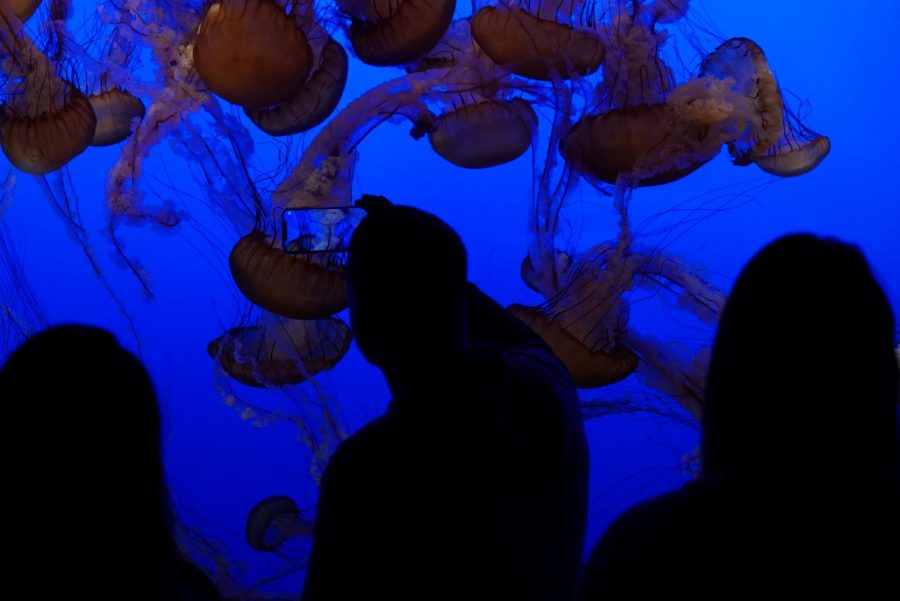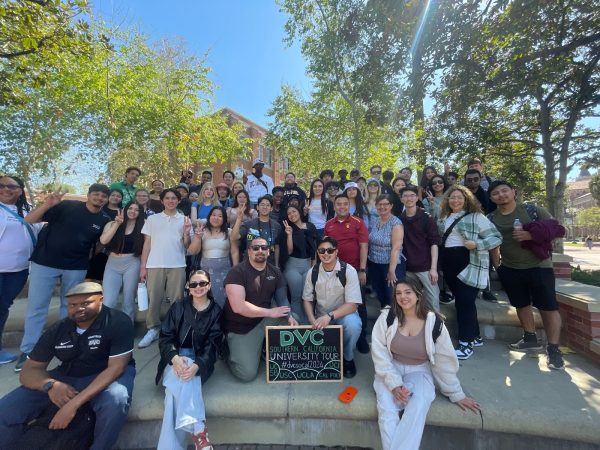Navigating the depths of Monterey Bay
November 29, 2018
Access into the Monterey Bay Aquarium’s 34-year-old spectacle of more than 35,000 animals and plants has been granted to Diablo Valley College oceanography students for Nov. 17 and Dec. 1 of this fall semester.
“The biggest takeaway for me was seeing the aquarium in a different perspective and actually understanding the underlying meaning of how crucial the ocean is to us,” said oceanography student David Jimenez. Jimenez attended the oceanography department’s Monterey Bay Aquarium field trip on Nov. 17.
The jellyfish exhibit on the Aquarium’s second floor produced the largest crowd that day while sea creatures seemingly levitated behind a blue window. Hardly anyone could resist pressing their hands against the glass standing thoroughly engulfed by Sea Nettle jellies and pain if not for the divider.
Oceanography program lead and professor John Freytag has been at DVC since 2005 and organized the field trip this semester for his fundamentals course to let students see a marine ecosystem in person. For Jimenez and his peers, their attitude towards the ocean was elevated while being shown a hidden world necessary for our own survival.
During the trip’s inception by oceanography and marine biology instructors Diana Mathias and Bill Stephenson, Monterey Bay’s Aquarium was not the only location that was examined. The Aquarium of the Bay at Pier 39 and the Steinhart Aquarium at the California of Sciences in Golden Gate Park were also considered as sites for the field trip.
However, the Monterey Bay Aquarium’s paramount focus on California’s marine ecosystem solidified the department’s final decision. Another benefit for choosing Monterey, was the free admittance policy for school field trips of eight students or more.
Out of the 3.3 acres and 320,000 square feet that make up the Aquarium, only 175,00 square feet are used for public space. The rest of that space is left up to 1,800 gallons of seawater being pumped every second through the facility and rooms that bare the sole purpose of making sure each tank runs properly, as stated on the Aquarium’s newsroom website.
Large machinery used for science has never been a stranger to DVC students working in the ocean-related department. There are over 100 oceanography and marine biology students who attend trips every semester that are funded by an expedition and field trip budget, which covers the costs associated with an oceanic research vessel called the Brownlee stretching 90 feet long, according to Freytag.
“We feel fortunate to have the program funds to continue to offer these trips,” said Freytag.
The Monterey Bay Aquarium opened Oct. 20, 1984, and from that day on they’ve allowed more than 2 million students to enter for free.
Over the last decade, DVC added to the attendance while also venturing into other research sites.
“Freytag intended us to use what we have learned in class at the aquarium to understand and see it through the lens of oceanography,” said Jimenez.
Students studying marine biology have gone to Monterey Bay Aquarium’s Research Institute, Moss Landing in Monterey, and the Marine Mammal Center on Rodeo Beach in Sausalito.
“There are a lot of great opportunities for college students, too, including one that I’ve just recently learned about,” wrote Freytag in an email interview.
Freytag provided a link to a specific organization titled the Community College Apprentice Research Experience. The opportunity allows students studying or interested in the STEM field to conduct state of the art research during a nine week program at California State University of Monterey Bay. The application opens in 2019.
For the Monterey Bay Aquarium, opportunities are prospective. Current, and even past DVC oceanography students met right at the edge of the shore near the member’s entrance on Nov. 17, looking out into what appeared to be an endless sea.
There was an initial greeting scheduled before everyone was allowed to trek on anywhere they wanted. The open water exhibit had a single strand of light stretching from the top of the glass wall down to its corner. The two story shadow acted as a curtain as each creature had a chance at becoming uncovered, catching the attention of a large crowd.
The exhibit housed a Green sea turtle facing extinction on the endangered species list, documented by the International Union for the Conservation of Nature and Natural Resources. Green sea turtle’s consumption of algae and seagrass beds groom the environment while the recycled nutrients lead to the growth of marine ecosystems.
The World Wild Life fund mentions on their website that seagrass beds’ function as a nursery for fish species which humans consume, making the green sea turtle a crucial foundation in the world’s food security.
“Most of us honestly don’t see the harm that we do to several species. They don’t see the animals true worth in the environment,” said first year oceanography student Gema Martinez.
















































































